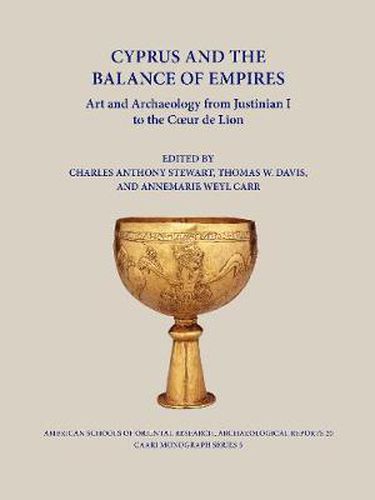Readings Newsletter
Become a Readings Member to make your shopping experience even easier.
Sign in or sign up for free!
You’re not far away from qualifying for FREE standard shipping within Australia
You’ve qualified for FREE standard shipping within Australia
The cart is loading…






Between 491 and 1191 AD, Cyprus was influenced by various political and cultural centres that vied for dominance in the Eastern Mediterranean. This collection of essays primarily focuses on the island’s archaeology when it was governed by the Byzantine capital of Constantinople. Greek and Orthodox Christian identity was cultivated during this period, which provided a sense of unity among the various provinces; and yet, the surviving historical and archaeological data concerning Cyprus is unique in that it expresses both local and regional characteristics. By investigating the various threads, whether textual, numismatic, architectural, or artistic, narrative has emerged that challenges our past assumptions.
The themes covered in this volume developed from a conference held in Nicosia, organized by the Cyprus American Archaeological Research Institute celebrating the 50th year anniversary of the Republic of Cyprus. An international group of experts explored several themes such as: the impact of recent archaeological discoveries; the shift from studying Late Antique urbanism to rural development; indicators of Cypriot identity; shifts in population settlement, production and trade; cultural interaction between Islam and Christianity; the significance of ceramic and numismatic evidence; monumental figural arts and their iconographical interpretation. The resulting chapters provide new and previously unpublished data, and should be considered a major contribution to Late Antique and Medieval studies.
151 colour and black & white illustrations included.
$9.00 standard shipping within Australia
FREE standard shipping within Australia for orders over $100.00
Express & International shipping calculated at checkout
Between 491 and 1191 AD, Cyprus was influenced by various political and cultural centres that vied for dominance in the Eastern Mediterranean. This collection of essays primarily focuses on the island’s archaeology when it was governed by the Byzantine capital of Constantinople. Greek and Orthodox Christian identity was cultivated during this period, which provided a sense of unity among the various provinces; and yet, the surviving historical and archaeological data concerning Cyprus is unique in that it expresses both local and regional characteristics. By investigating the various threads, whether textual, numismatic, architectural, or artistic, narrative has emerged that challenges our past assumptions.
The themes covered in this volume developed from a conference held in Nicosia, organized by the Cyprus American Archaeological Research Institute celebrating the 50th year anniversary of the Republic of Cyprus. An international group of experts explored several themes such as: the impact of recent archaeological discoveries; the shift from studying Late Antique urbanism to rural development; indicators of Cypriot identity; shifts in population settlement, production and trade; cultural interaction between Islam and Christianity; the significance of ceramic and numismatic evidence; monumental figural arts and their iconographical interpretation. The resulting chapters provide new and previously unpublished data, and should be considered a major contribution to Late Antique and Medieval studies.
151 colour and black & white illustrations included.